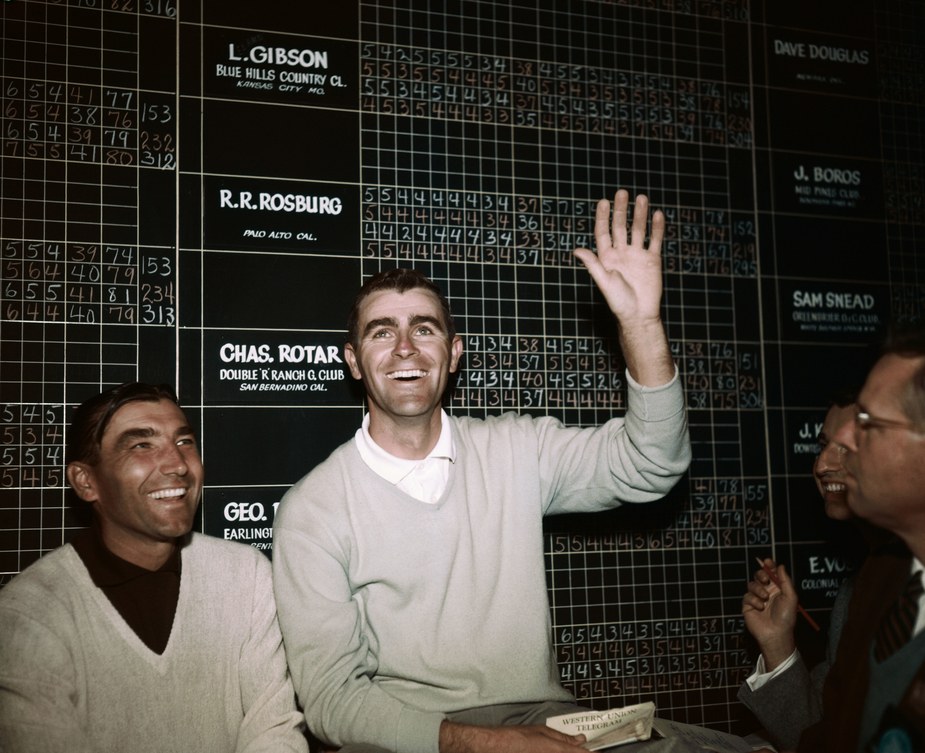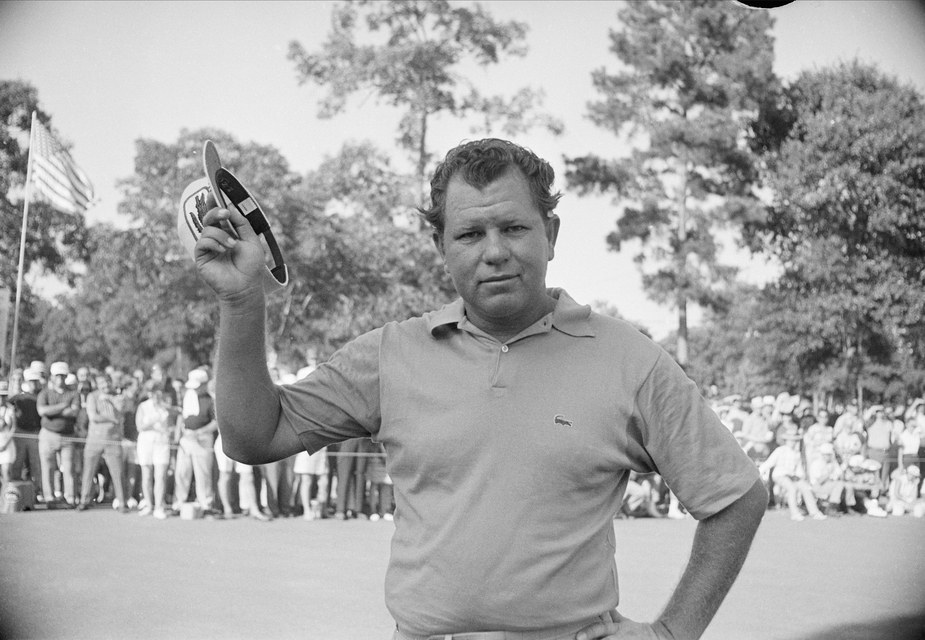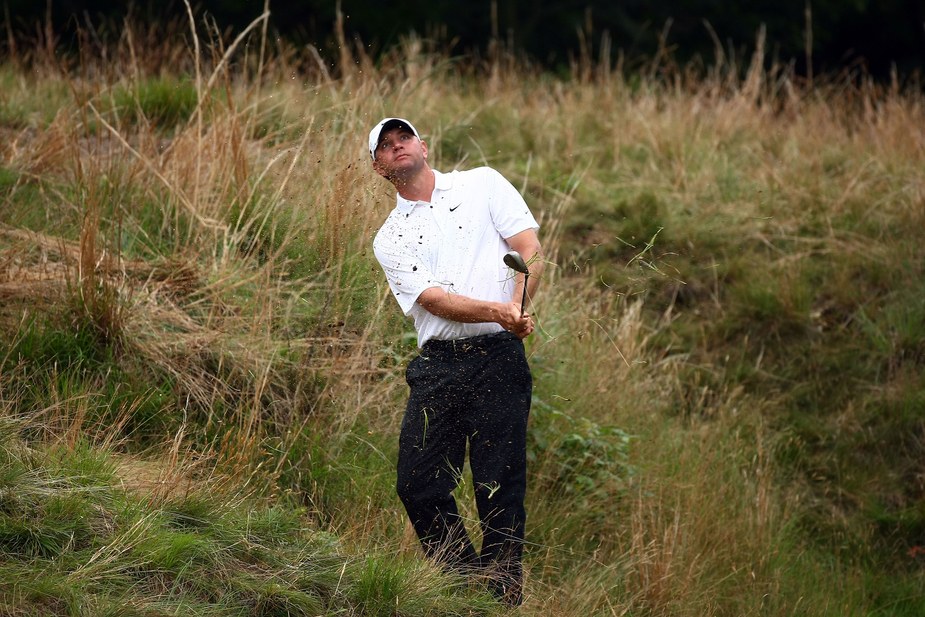Former USGA president Sandy Tatum was fond of saying the mission of the US Open was to identify the best players in the world. For the most part, the govering body fulfills that quest. Occasionally, however, a champion pops up with questionable credentials as the Open has produced its share of upset winners in its 123-year history – Cinderfella stories in which players’ careers enjoyed a jumpstart, a resurrection or simply one moment of glory. Here we present the 10 most unlikely US Open champions – winners who raised not only their profile, but plenty of eyebrows as well, by capturing the US Open championship.
1. Michael Campbell, 2005
Leading up: Although fairly well known on the international circuits, the New Zealander had little success on the US PGA Tour, playing in 62 events with no wins and only six top-10s before Pinehurst. To make the Open field, Campbell needed to hole a six-foot birdie putt on his final hole of sectional qualifying.
How he won: Campbell won the 2005 US Open at Pinehurst No.2 via good play of his own and collapses by others. Starting the day four behind Retief Goosen, Campbell managed a one-under-par 69 while the three other golfers in the final two pairings failed to break 80.
Aftermath: Campbell’s win turned out to be his lone PGA Tour triumph and signalled a demarcation line in his career. From 2006-2013, he played in 37 PGA Tour events with just one top-10 performance. Take out 2006 and he played in 25 events, missing 18 cuts and withdrawing in one other. In 61 rounds over that span, he posted just one round in the 60s with 45 rounds of 75 or higher – 11 of them in the 80s.

2. Jack Fleck, 1955
Leading up: The club pro from Davenport, Iowa, won less than $6,800 in 31 tour events prior to the 1955 US Open. Fleck came to Olympic Club having finished no better than T-10 in any tour event in 1955.
How he won: Made two birdies over the final four holes to tie Ben Hogan. In the playoff, Fleck birdied Nos. 8, 9 and 10 to go three ahead. Hogan got to within a stroke, but double bogeyed the 18th.
Aftermath: Fleck had a steady, if unspectacular career, winning two more events. His best year was 1960, when he ranked 18th in earnings. He threatened at that year’s US Open at Cherry Hills, finishing T-3, three strokes behind Arnold Palmer.

3. Orville Moody, 1969
Leading up: After serving 14 years in the Army, Moody joined the tour in 1968, finishing 103rd in earnings. He came into the Open ranked 26th in earnings in 1969.
How he won: Moody trailed Miller Barber by three entering the final round at Champions Golf Club near Houston. But Barber bogeyed five of the first eight holes in the final round, leaving Moody to duel Bob Rosburg for the title. After Rosburg missed a three-footer on the 72nd hole, Moody, a superb ball-striker, parred the 18th to win by one.
Aftermath: The Open was Moody’s lone win during a 16-year PGA Tour career in which he finished outside the top 100 in earnings more often than not. His senior career, however, was as surprising as his Open triumph as Moody captured 11 titles (including the 1989 US Senior Open) and won more than $3.5 million.
4. Sam Parks Jr, 1935
Leading up: Parks learned the fundamentals of the game from Gene Sarazen in 1922 but didn’t play professionally until 1933. He had just four top-10s (including a second in the Pennsylvania Open at Oakmont CC in 1934) in two-plus years prior to his Open win.
How he won: Park played Oakmont more than 100 times before the Open. The preparation paid off as he was tied for the lead after 54 holes. The final round was played in poor weather, and none of the players in the top 20 broke 75. Despite bogeying three of the last four holes, Parks’ 76 was enough for a two-stroke victory.
Aftermath: Parks quit the tour in 1942 and went to work for US Steel, eventually becoming a member of Oakmont.
5. Tony Manero, 1936
Leading up: Although Manero, a club pro by trade, fashioned a handful of wins in lesser professional events, he needed to prevail in a playoff during qualifying to make the field in 1936.
How he won: Harry (Lighthorse) Cooper shot what would have been a tournament-record 284 on the Upper Course at Baltustrol Golf Club in Springfield, New Jersey, but Manero’s final-round 67 let him finish two strokes better. Playing with boyhood friend Gene Sarazen, who had requested the pairing, calmed Manero’s nerves, but after Manero holed out on the 72nd green, a complaint was filed with the USGA claiming Sarazen had provided Manero advice during the round. The USGA reviewed the matter, decided there was no validity to the claim and let Manero’s win stand.
Aftermath: Manero collected on a $50 bet he had made on himself the final day. A member of the 1937 US Ryder Cup team, he reached the semifinals of the 1937 PGA and won the 1938 Glen Falls Open. He effectively quit the tour after World War II, later opening a steakhouse in Greenwich, Connecticut, with his brother-in-law.
6. Cyril Walker, 1924
Leading up: Even Walker, whose lone claim to fame was winning the 1920 Pennsylvania Open, questioned his chances. “It takes a strong man to stand the strain of 72 holes over two days,” said Walker, who weighed a mere 118 pounds. “I’ll crack on the second day.”
How he won: Walker, an agonizingly slow player, shot steady, if unspectacular rounds of 74-74-74-75 at Oakland Hills Country Club in Bloomfield Hills, Michigan, good enough for a three-shot win over defending champ Bobby Jones.
Aftermath: Walker never won another tournament after his Open triumph. He played in only three more Opens, his best showing a T-47 in defence of his title. Heavy drinking led to health issues and he died in 1948 at age 56.
7. Johnny Goodman, 1933
Leading up: Goodman made the finals of the 1932 US Amateur. He also finished T-11 in the 1930 US Open.
How he won: Holding a six-stroke lead over Ralph Guldahl entering the final round at Illinois’ North Shore Country Club, Goodman proceeded to play a wild front nine, going eagle-birdie on Nos. 2-3 to take a nine-shot lead before butchering the next six holes in six-over par. After another bogey on 14, his lead had evaporated. Guldahl then missed a four-foot par save on the 72nd hole, handing the tournament back to Goodman, the fifth – and last – amateur to win the Open.
Aftermath: Goodman continued his fine play as an amateur, making it to the semifinals of the US Amateur in 1935 and 1936 before winning a second Amateur crown in 1937. Goodman eventually turned pro but did not duplicate his success while a member of the play-for-pay set.

8. Lucas Glover, 2009
Leading up: A workhorse since joining the PGA Tour full time in 2004, Glover played an average of 29 events a year from 2004 through 2008, allowing him to top $1 million in earnings three times during that span. Top-notch results, however, were hard to come by as he had two top-three finishes in 152 events, including a win at the 2005 Funai-Disney Classic. In 2009, however, Glover finished T-3 in the Buick Invitational and T-2 at the Quail Hollow Championship prior to the Open at Bethpage Black.
How he won: Although he missed the cut in his three previous Opens and got in the field via sectional qualifying, Glover shot a second-round 64 at soggy Bethpage Black. During the rain-induced Monday finish, Glover stood four-over par for the day on the 16th hole, but hit his approach to six feet and made the putt, leading to a two-shot win over Phil Mickelson, David Duval and Ricky Barnes.
Aftermath: Although he picked up another win at the 2011 Wells Fargo Championship, a knee injury hampered him in 2012, and he hasn’t played well since with just one top-three in 157 starts since 2012. That led to Glover losing his PGA Tour card after the 2014/15 season, but he regained it through the Webcom Finals.
9. Billy Burke, 1931
Leading up: Although considered one of the more accurate players of his day, Burke’s resume listed only four non-tour wins.
How he won: The marathon of all Opens had Burke and George Von Elm tied after 72 holes at Ohio’s Inverness Club. The 36-hole playoff also ended in a tie, necessitating a second 36-hole face-off – a rollercoaster affair that saw six holes with two-stroke swings and only 11 holes in which Burke and Von Elm had the same score. After the first hole in the afternoon 18 Burke never trailed again, winning by one.
Aftermath: Extensive overtime caused the USGA to move to 18-hole playoffs. Burke made the semifinals of the PGA in 1931 and played on 1931 and 1933 Ryder Cup teams. Burke won only one more individual title, at the 1935 Cascades Open.
10. Ed Furgol, 1954
Leading up: Although he left the tour full-time in 1951 to pursue a club professional job in Missouri, Furgol had stretches where he was an ironman, playing more than 40 tournaments twice. Although one of the tour’s top earners, Furgol won just twice prior to the 1954 Open.
How he won: Furgol, who had a withered left arm and hand from a boyhood accident, played magnificently steady golf over the final round at Baltusrol Golf Club’s Lower Course, putting 16 pars on the board against a pair of bogeys (both three-putts) to beat Gene Littler, who missed an eight-footer to tie, by one.
Aftermath: Although he was named the PGA’s Professional Golfer of the Year for 1954, health problems in the form of bone spurs in his good arm effectively ended his playing career in 1957.



